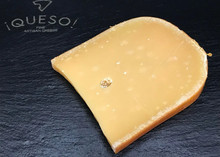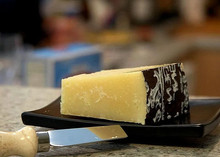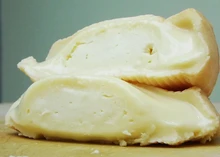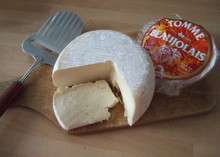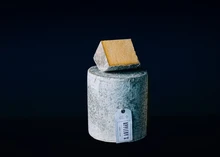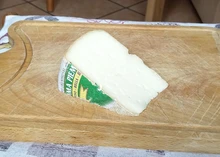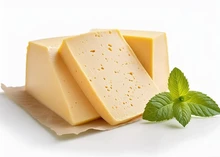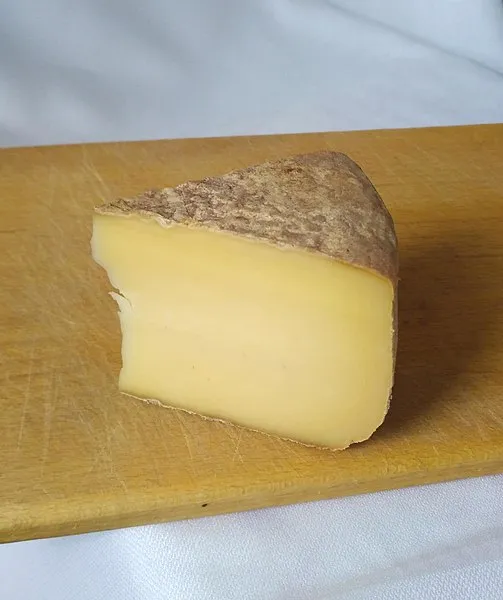
Substitutes for Toma
Toma cheese, a semi-hard cheese from the Aosta Valley region in Italy, is renowned for its mild, slightly fruity flavor. However, if you're still looking for Toma or simply want to experiment with different flavors, several versatile alternatives are waiting to be explored. In this article, we'll delve into a variety of cheeses that can serve as substitutes for Toma cheese, each with its unique characteristics and flavors, empowering you to make informed culinary choices and embark on a flavorful adventure.
Is Toma Cheese Similar to Saint Nectaire Cheese?
Saint Nectaire, a renowned French cheese made from cow's milk, shares some similarities with Toma.
Both cheeses have a semi-soft texture and a mild taste profile. However, Toma cheese tends to be slightly less creamy than Saint Nectaire and has a more delicate flavor. While the two cheeses can be used interchangeably in certain recipes, it is essential to note that the overall taste and texture may vary.
One notable difference between Toma and Saint Nectaire cheese is their geographical origins. Saint Nectaire cheese hails from the Auvergne region in central France, where it has been produced for centuries using traditional methods. On the other hand, Toma cheese originates from the Piedmont region in Italy, known for its rich dairy farming heritage and alpine pastures that contribute to the unique flavor profile of the cheese.
When it comes to aging, Saint Nectaire cheese is typically aged for a minimum of 6 weeks, allowing it to develop a more pronounced flavor and a slightly firmer texture. In contrast, Toma cheese is often aged for a shorter period, resulting in a milder taste and a softer consistency. Both cheeses pair well with a variety of accompaniments, such as fresh fruits, nuts, and crusty bread, making them versatile options for cheese boards and culinary creations.
Is Toma Cheese Similar to Havarti?
When exploring the world of cheese, it's fascinating to delve into the nuanced differences between varieties that may seem similar at first glance. Toma cheese, originating from Italy, boasts a rich history deeply rooted in the Piedmont region. This semi-soft cheese is traditionally made from cow's milk and aged for several months, resulting in a complex flavor profile with hints of nuttiness and a subtle tang. Its velvety texture and earthy undertones make it a versatile option for both cooking and snacking. In contrast, Havarti cheese has a more straightforward origin story, originating in Denmark in the mid-19th century. This cheese is known for its smooth, creamy texture and mild, slightly tangy flavor. Often compared to a blend of cheddar and Swiss cheese, Havarti is a popular choice for cheese boards and sandwiches alike. Its ability to melt uniformly and smoothly over dishes makes it a beloved option for culinary creations that call for a gooey, indulgent finish.
Is Toma Cheese Similar to Tomme Crayeuse Cheese?
Tomme Crayeuse s a semi-soft cheese originating from the Rhône-Alpes region of France. While it possesses a creamy texture and nutty undertones, it differs from Toma cheese in terms of flavor intensity.
Tomme Crayeuse tends to have a more robust and earthy flavor compared to the milder Toma cheese. However, if you appreciate the complexity of Tomme Crayeuse, it can be used as a substitute in recipes where a more robust-tasting cheese is desired.
One exciting aspect of Tomme Crayeuse is its unique production. Made from cow's milk, this cheese is aged in caves for a minimum of 60 days to develop its distinctive flavor profile. The aging process allows the cheese to create a natural rind. The caves where Tomme Crayeuse is aged play a crucial role in the cheese's final characteristics, as they provide the ideal environment for the cheese to mature and develop its complex flavors.
When it comes to Toma cheese, its delicate and buttery flavor is a hallmark of the Piedmont region. Toma cheese, typically aged for a shorter period compared to Tomme Crayeuse, offers a softer and milder taste profile. Despite these differences, both cheeses share a common versatility in the kitchen, making them suitable for a variety of culinary applications, from melting into a gooey fondue to grating over pasta dishes for added richness.
Is Toma Cheese Similar to Gouda Cheese?
Gouda, a Dutch cheese made from cow's milk, shares some similarities with Toma.
Both cheeses have a firm texture and a slightly nutty taste. However, Gouda cheese tends to be sweeter and has a more pronounced caramel-like flavor compared to the milder Toma cheese. If you enjoy the sweetness of Gouda cheese, it can be used as a substitute in salads, sandwiches, and cheese boards.
Is Toma Cheese Similar to Pecorino Romano Cheese?
Pecorino Romano is an Italian cheese made from sheep's milk.
Although it differs from Toma cheese in terms of the animal milk used, both cheeses offer a robust and salty flavor profile. Pecorino Romano is drier and crumbly, while Toma cheese has a more supple texture. If you are seeking a substitute with a more substantial and tangier taste, Pecorino Romano can be an excellent option in pasta dishes and gratins.
Is Toma Cheese Similar to Piemont Toma DOP Cheese
Piemont Toma DOP – also originating from Italy – is similar to Toma cheese in terms of its geographical origins and production methods.
Both cheeses are made from cow's milk and have a mild flavor profile. However, Piemont Toma DOP cheese has a firmer texture and a slightly stronger taste compared to Toma. It can be used as a substitute in recipes that call for Toma cheese, providing a similar taste experience with a touch of added complexity.
Is Toma Cheese Similar to Munster Cheese?
Munster –originating from the Alsace region of France – is a semi-soft cheese known for its creamy texture and mild flavor.
While Munster is a somewhat suitable substitute for Toma in terms of texture, it has a slightly sharper and tangier taste. However, if you prefer a cheese with a bit more zing, Munster can be used in sandwiches, burgers, and other dishes that call for Toma cheese.
Is Toma Cheese Similar to Cheshire Cheese?
Cheshire cheese – an English cheese made from cow's milk – differs from Toma cheese in terms of its texture and flavor.
Cheshire cheese’s texture is much crumblier and dryer than Toma’s. Flavor-wise, Cheshire tends to have a more pronounced tang and a sharper taste.
Still, if you enjoy the unique characteristics of Cheshire cheese, it can be used as a substitute in recipes that require Toma, and using it will add a distinct regional flavor to your dishes.
It's always exciting to explore different cheeses and discover new flavors. While Toma cheese has its distinctive qualities, these substitutes can offer a similar experience, whether through their texture, taste, or regional nuances. Next time you're in the mood for Toma cheese, consider trying one of these alternatives and broaden your cheese repertoire!

